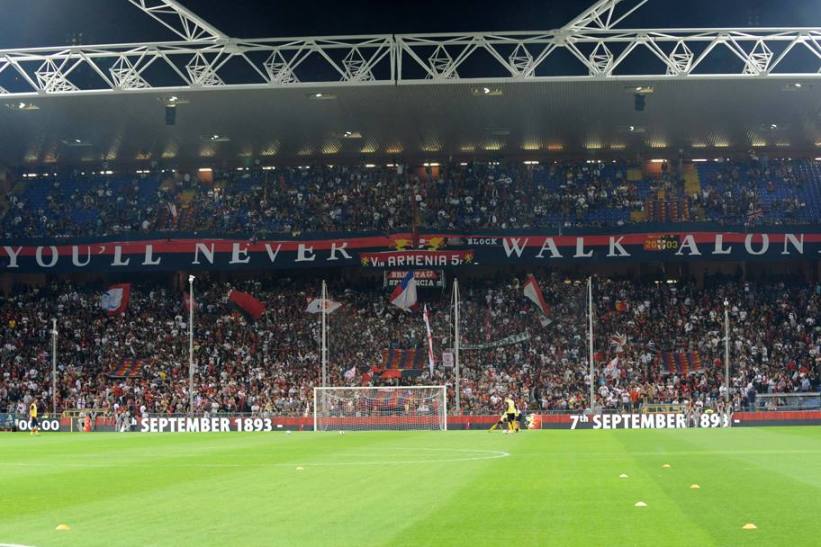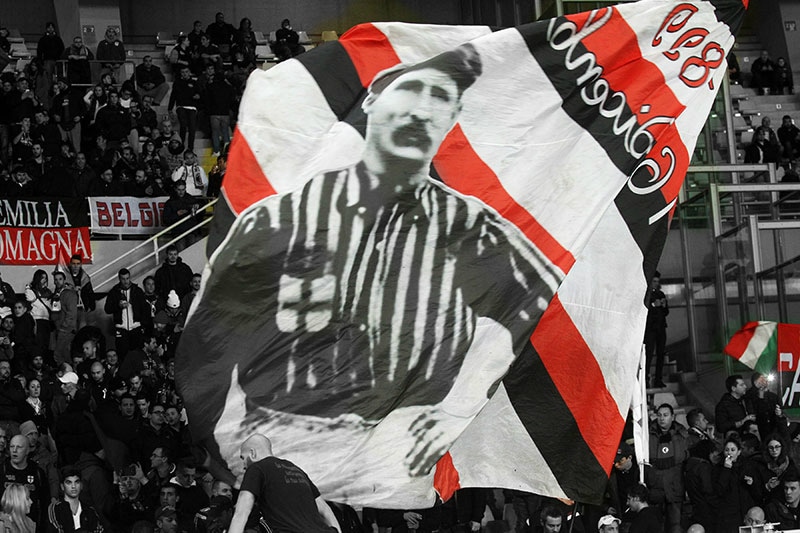Italy may now be one of the leading names in world football, but association football came to the country relatively late. Italy in the late 1880s was a newly unified nation and one that was hemorrhaging members of its population to emigration. Into this environment came a whole new ball game.
The spread of Association rules football across the world in the last four decades of the 19th century typically follows either of two patterns: British merchants taking the game with them to join their ex-patriate communities around the world or wealthy students and employees in Britain exposed to the game, getting hooked, and taking a ball and rule book back to their home country in order to continue playing. In Italy’s case, both are true.
There are three main protagonists that can claim to be the fathers of Italian football, but before we weigh into that debate it’s absolutely critical to understand the context of the peninsula in the late Victorian period.
When Edoardo Bosio, the Turin-born son of a Swiss-Italian brewer, first founded Torino Football and Cricket Club in 1887, aged 23, Italy was a newly-formed country. The unification, or the Risorgimento, had only been completed in 1871 after a series of bloody conflicts bought an end to centuries of foreign occupation. It was also a highly impoverished country, divided culturally, politically, linguistically and economically, especially between north and south. Some would argue that’s still the case today, but estimates vary that from 1876 and 1914 between eight and 14 million Italians emigrated – mostly to the Americas.
So many Italians arrived in Argentina and Uruguay that they influenced both the local Spanish accent and slang, lunfardo. The chances are that, due to the game already having been played in Buenos Aires since 1867, that an Italian in Argentina may have seen or played the game there before an Italian in the mother country.
Edoardo Bosio and the Nottingham Connection
There was already an Italian connection to Nottingham football before Bosio arrived to work as an accountant for lace manufacturer Thomas Adams in the 1880s. The Nottingham Forest Football Club had become the first in the world to don red shirts in 1865 and they did so in honour of Giuseppe Garibaldi, the Nice-born hero of the Risorgimento. Forest’s near neighbours Notts County would later make a significant shirt contribution of their own to Italian football, providing Juventus with its black and white stripes in 1903.
It’s in Nottingham that Bosio first got involved in football, although his main sport was rowing. At 1.81m tall, he would have had some presence in Victorian-era Italy, where even now the average height for a male is 1.74m.
When he returned from stints in Nottingham and London, he founded the Torino Football and Cricket Club – not related to the current Torino FC – to practice cricket and rowing in the summer, and football in the winter, along with mountaineering.
By 1889 there was another team in Turin, Nobili Torino, “The Turin Nobles”, so named because the team contained Prince Luigi Amadeo – Duke of the Abruzzi and a member of the House of Savoy – and the Marquis Ferrero of Ventimiglia. The two clubs would merge in 1891 to form Internazionale Torino, retaining Nobili’s yellow and black stripes. In the same year, Bosio invited over a colleague from Thomas Adams, Herbert Kilpin.
More on Kilpin later…
James Richardson Spensley – The English Doctor
While thousands of Italians were emigrating from the port of Genoa, one Englishman sailed into the city to take up his post as a doctor for the British employees transporting coal from Italy. James Richardson Spensley, a doctor from Stoke Newington in East London, arrived in Genoa in 1896, aged 30, and immediately joined the Genoa Cricket and Athletics Club, which had been formed in a small room on the Via Palestro on 7 September 1893 by Brits for Brits.
Spensley, a keen boxer and a cultured linguist – he knew both Greek and Sanskrit, and wrote for the Daily Mail – set up the club’s football arm on 10 April 1897, and persuaded the board to admit Italians. Eventually, this branch of the club would supersede athletics, and thus the organisation settled on the name Genoa Cricket and Football Club.
While Bosio may well have been the first to introduce football to Italy, his games will have been little more than informal kick-abouts, and it was Spensley who saw the potential and drove forward the sport in terms of organisation.
With such a nascent scene emerging in the northern powerhouse, it was to Turin that Spensley was to draw his first opponent for Genoa CFC.

Genoa CFC and the English roots of Calcio
And so, the first game of football on Italian soil was arranged between Genoa CFC and Football Club Torinese for 6 January 1898 in Genoa with the visitors winning 1-0.
Numerous records survive, including the name of the referee, Reverend Richard Douglas. John Foot recounts in Calcio, the definitive history of Italian football, that “154 tickets were sold at the full price of one lira and 23 at half-price and that 84 people paid extra for numbered seats and the whole event made a profit of over 100 lire.”
That match led straight away to the formation of the Italian Football Federation – the Federazione Italiana Football – Italianised in 1909 to the Federazione Italiana Giuoco Calcio (FIGC). By May of 1898 a four-club, one-day tournament had been held in Turin.
These four pioneer clubs – Spensley’s Genoa CFC, Bosio and Kilpin’s Internazionale di Torino, plus two other Turin clubs, FC Torinese and Ginnastica Torino – all met up at the Velodromo Umberto I in Turin on 8 May. The use of this venue hints at Italy’s leading sporting passion at the time – cycling.
The tournament format was fairly basic: two semi-finals and a final. The first match kicked off at 9am, with Internazionale beating FC Torinese 1-0. Genoa, with Spensley in goal and fielding three other British players, defeated Ginnastica 2-1 in the second semi-final.
After a break for lunch, the final kicked off at 3pm, with Genoa winning by another 2-1 score-line with an extra-time goal from Norman Victor Leaver. The Duke of Abruzzi – he of the Nobili fame – presented the trophy to Genoa.
The same sides contested the final the following year at Genoa’s home ground at Ponte Carrega, with Spensley’s side once more triumphant.
Herbert Kilpin – The Lord of Milan
Kilpin had been already been a passionate footballer in Nottingham and, as we already learned, followed Bosio to Turin. When work took him to Milan, he founded the Milan Football and Cricket Club in 1899 and led the club to its first three championship titles.
His life was turned into both a book and a film The Lord of Milan in 2017. As the film recounts, Kilpin stated to those present at the club’s foundation; “Our colours will be red, because we will be the devils, and black because of the fear we will strike into the hearts of our opponents.”

Following Herbert Kilpin: From Nottingham to Milano with the relatives of AC Milan’s founder
After Kilpin’s retirement in 1907, a schism opened in the club over whether or not to allow foreign players to join the Milan Football and Cricket Club. The club had been predominantly Italian and British and the Italian Football Federation was keen to promote local participation.
A breakaway club determined to include all comers was founded on 8 March 1908, its name was Football Club Internazionale. The new team was especially Swiss-heavy at the outset – and won its very first championship just two years later.
By 1910, Italy had a national team made entirely of Italians. The team played in white for its first two matches before adopting the Savoy Blue by its third game in 1911. This is why Italy are Gli Azzurri (The Blues) rather than wearing a kit that follows the colours of the flag, which would have probably been akin to Mexico’s.
What happened to the founding fathers?
A gentleman to the last, Dr James Richardson Spensley was killed in no man’s land during World War I in 1915 by a German sniper, while he was attending to a wounded German soldier.
His legacy assured, Genoa CFC was an established club with its own permanent home since 1911 in the Marassi district. The stadium is named after former Genoa player Luigi Ferraris, who was also killed in the Great War. For more on Spensley, read my Gentleman Ultra piece on Genoa CFC’s English roots.
Kilpin died in Milan in 1916. In 1998, local football historian Luigi La Rocca researched the resting place of Kilpin, finding a mislabelled ‘Alberto’ Kilpin in the archive. Kilpin was in a humble protestant graveyard but now rests alongside the great and the good Milanese in the huge Cimitero Monumentale, thanks to the club he founded.
Bosio died in Davos, Switzerland in 1927, aged 62. Seven years later, Italy were world champions.


A very decent article,nevertheless there’s a big mistake:
The Torino Foot-ball and Cricket Club is *totally* related to Torino F.C.
via Internazionale Torino and then F.C. Torinese